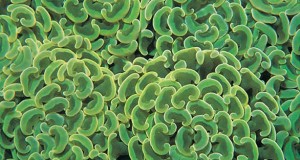With this weeks passing of Earth Day 2008, I thought I would write a blog about this great article that I had read recently on www.sciencedaily.com. Some of the darkest days in U.S history involve the nuclear weapons use and testing during and after WWII. Most people learned about the bombs dropped on Japan during WWII in history class, or from family members who lived in that era.
Much less well known nuclear testing was done in the years following WWII as the cold war escalated, and the demand for bigger and bigger bombs grew. From 1946 to 1958 the U.S. Government conducted nuclear bomb tests on the remote Pacific Island Group of Bikini Atoll, which is part of the Marshall Islands. In 1954 the U.S. detonated, what was at the time, the largest hydrogen bomb ever tested. The bomb was code named Castle Bravo, and was 15 megatons (1,000 times more powerful that the bomb dropped on Hiroshima). The blast vaporized 3 islands, raised the water temperature to 55,000 degrees, and left a crater that was over a mile wide and more that 200 feet deep. Needless to say, there was nothing left of what was a thriving tropical island group and surrounding reefs.
Enough of the bad news, this story has a happy ending. Recently a group of international scientists returned to Bikini Atoll to see what was there, almost 50 years later. Plant life on the surface had returned, but is still contaminated with radiation (don’t eat the coconuts). What the group found underwater was truly amazing. As they planned their dive into the Bravo Crater, expectations were running wild. The last time the area was surveyed it looked like part of the moon, and was irradiated.
What they found was a thriving coral reef ecosystem that had completely self seeded itself in the once barren wasteland. Porites corals that reached 25ft in the water, huge formations that looked like trees reaching for the surface. The belief is that water currents from untouched neighboring areas brought larval corals to Bikini, where they settled and matured. The corals had recolonized as much as 80% of the habitat in some of the areas studied.
Compared to studies performed at Bikini prior to the testing, the results show that there has been a serious impact on the diversity of corals to the area. The new study showed that 40 species that were documented to have been there prior to testing, where no longer there, and appear to be locally extinct. I found it amazing that what was there had reclaimed space that had felt the worst of what human kind can offer.
This news shows that, given the chance, reefs can recover from even the most severe destruction. Maybe by looking at the species that are thriving in the Bravo Crater, we can use them to as a guide to recolonizing reefs that have been destroyed by shipping, fishing, and pollution around the world. The main thing that I took from the story is that if we as a society can get our act together as far as protecting our natural resources, that Mother Nature can fight back pretty hard if we let her.
Until Next Blog,
Dave
 That Fish Blog – Aquarium Advice and Information
That Fish Blog – Aquarium Advice and Information



Here’s some additional perspective on how this came to be.